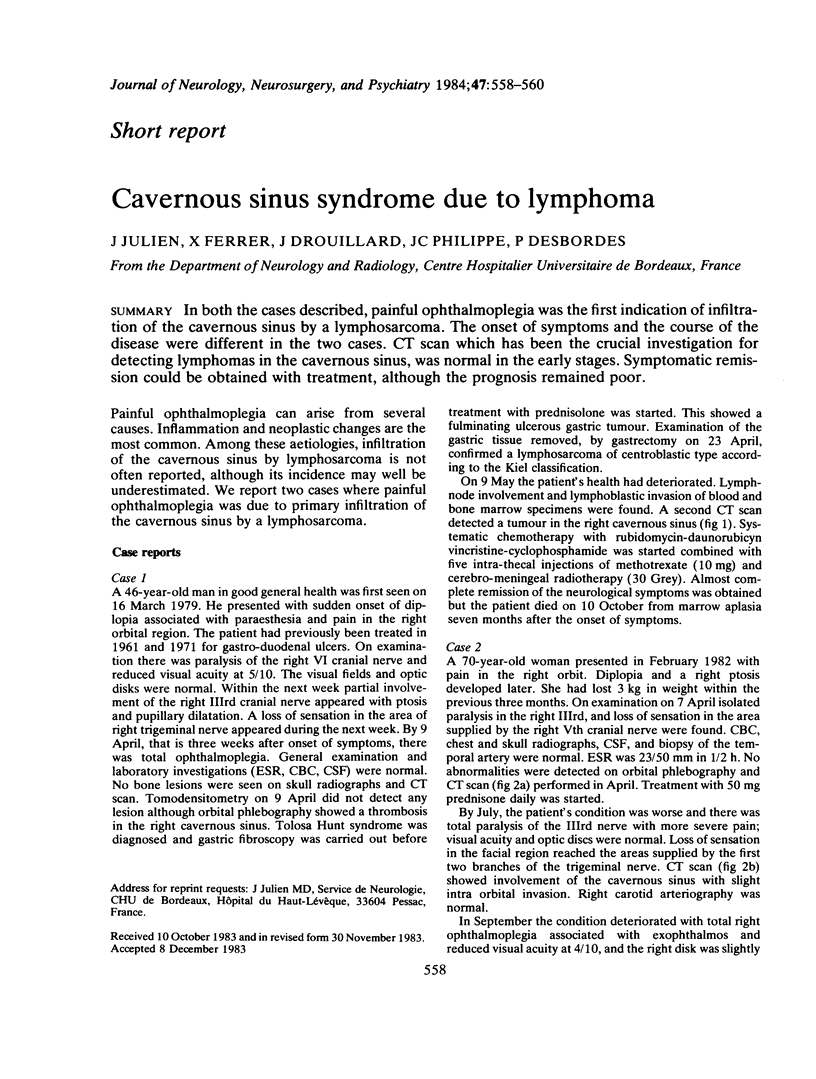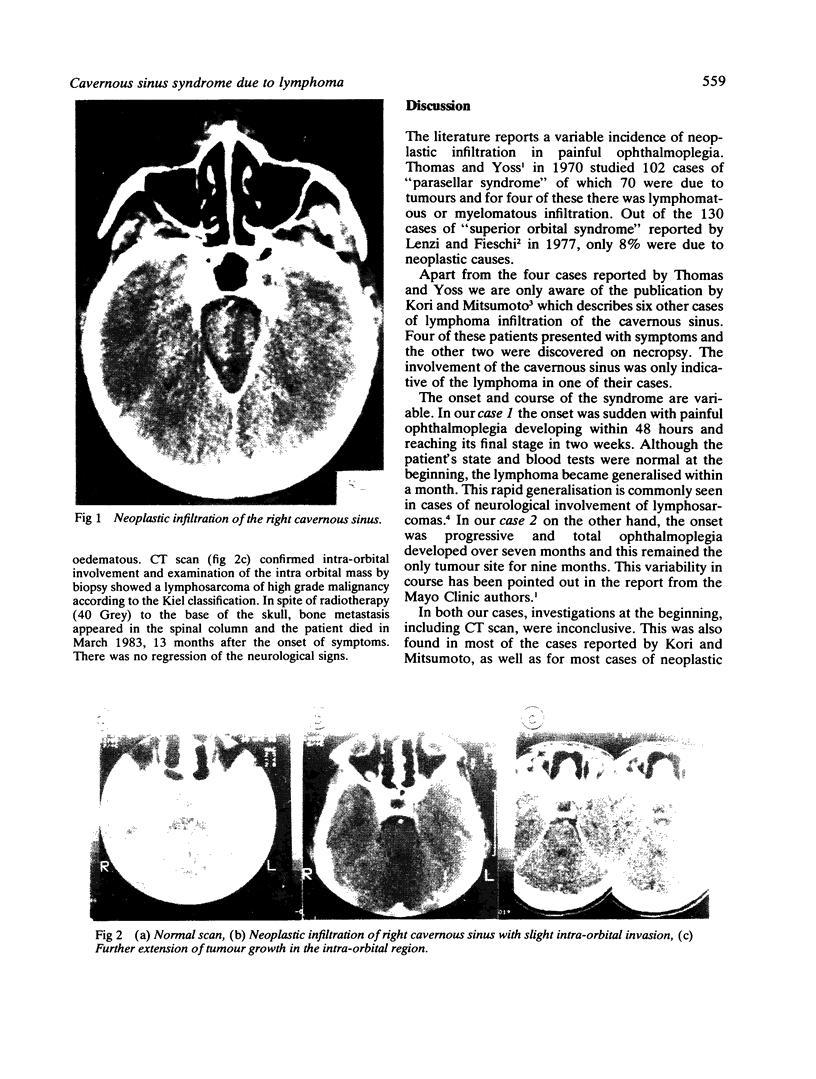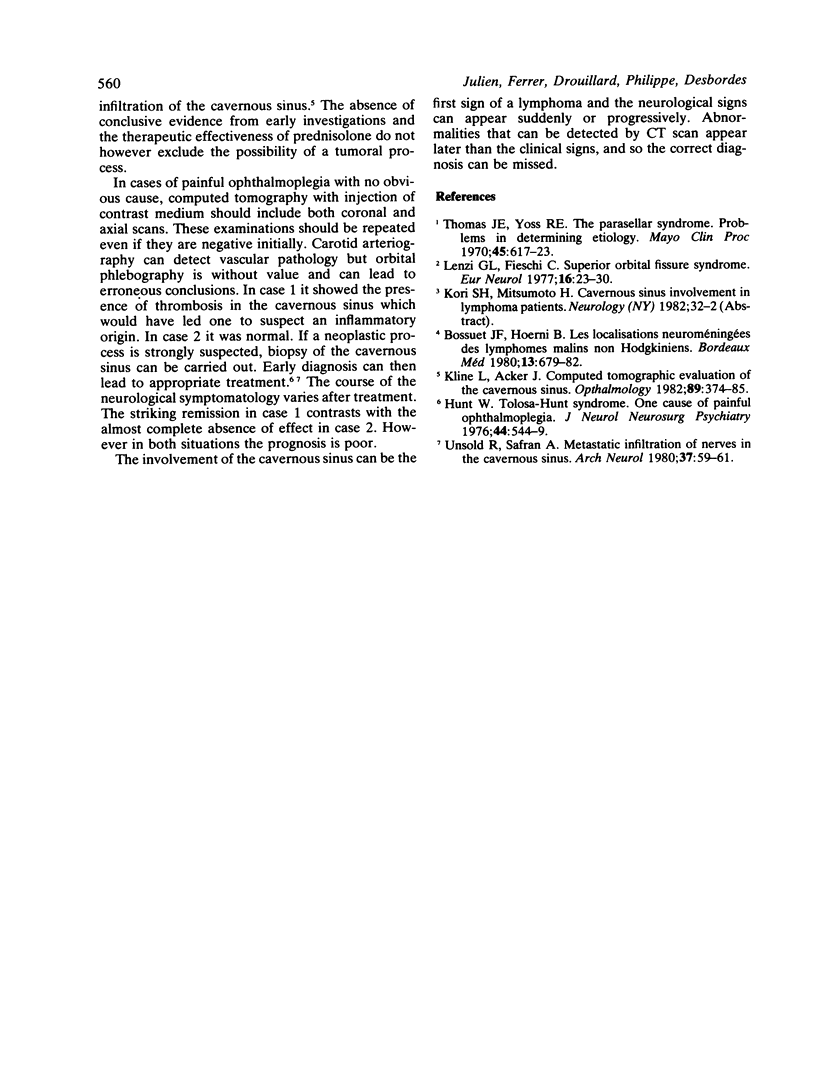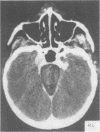Abstract
In both the cases described, painful ophthalmoplegia was the first indication of infiltration of the cavernous sinus by a lymphosarcoma. The onset of symptoms and the course of the disease were different in the two cases. CT scan which has been the crucial investigation for detecting lymphomas in the cavernous sinus, was normal in the early stages. Symptomatic remission could be obtained with treatment, although the prognosis remained poor.
Full text
PDF


Images in this article
Selected References
These references are in PubMed. This may not be the complete list of references from this article.
- Hunt W. E. Tolosa-Hunt syndrome: one cause of painful ophthalmoplegia. J Neurosurg. 1976 May;44(5):544–549. doi: 10.3171/jns.1976.44.5.0544. [DOI] [PubMed] [Google Scholar]
- Kline L. B., Acker J. D., Post M. J. Computed tomographic evaluation of the cavernous sinus. Ophthalmology. 1982 Apr;89(4):374–385. doi: 10.1016/s0161-6420(82)34781-8. [DOI] [PubMed] [Google Scholar]
- Lenzi G. L., Fieschi C. Superior orbital fissure syndrome. Review of 130 cases. Eur Neurol. 1977;16(1-6):23–30. doi: 10.1159/000114876. [DOI] [PubMed] [Google Scholar]
- Thomas J. E., Yoss R. E. The parasellar syndrome: problems in determining etiology. Mayo Clin Proc. 1970 Sep;45(9):617–623. [PubMed] [Google Scholar]
- Unsöld R., Safran A. B., Safran E., Hoyt W. F. Metastatic infiltration of nerves in the cavernous sinus. Arch Neurol. 1980 Jan;37(1):59–61. doi: 10.1001/archneur.1980.00500500089018. [DOI] [PubMed] [Google Scholar]




